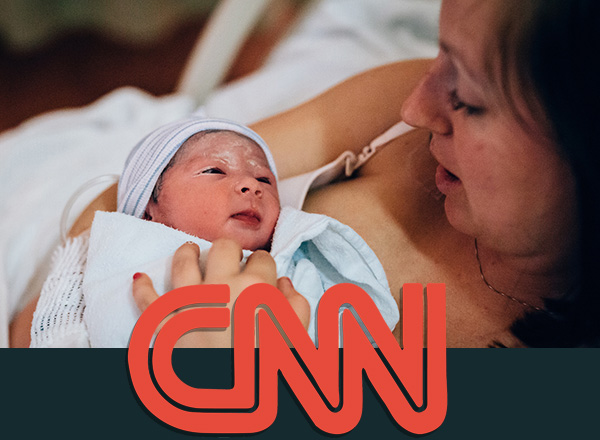Embryo Transfer
Embryo transfer is a procedure that typically occurs two to three days after oocyte retrieval. The whole procedure is easy and usually takes just a few minutes, followed by an additional 30-minute rest period. Caution in the next two to three days is also suggested. Sedation is not required, apart from exceptional cases; however, patients must have a mildly full bladder so the doctor can visualize the uterine cavity using an abdominal ultrasound.
The doctor prepares the woman by inserting a speculum to widen the cervix and cleaning the area with a non-toxic solution. The embryologists load the selected embryos into a specially designed catheter in a small amount of culture medium (Dr Thanos Paraschos is the inventor of the Rigid Wallace Catheter).
When the patient is properly prepared, the embryologist delivers the catheter containing the embryos to the procedure room. The doctor gently threads the catheter through the cervix and into the uterus, where he deposits the embryos. The whole process is performed under ultrasound guidance. Once complete, the embryologist examines the catheter to confirm that all embryos were deposited in the uterus. If not, the procedure is repeated.
The number of embryos transferred varies. Usually, two to four embryos at 2-4 or 4-8 cell stages are transferred. The final number of embryos transferred depends on their quality (cleavage stage, morphology), the patient's age, the number of IVF cycles and the possibility of a pregnancy with twins or triplets.
Blastocyst Transfer
Doctors and embryologists have recently tried to reduce the number of embryos transferred back to the uterus. The purpose is mainly to diminish multiple pregnancies and avoid the gynaecological problems and complications that usually these pregnancies entail. The transfer of embryos at the blastocyst stage is a way to accomplish their goal.
At the blastocyst stage (approximately 5 days after oocyte retrieval), an embryo contains 120-200 cells to the point which, after hatching from the zona pellucida, its implantation to the endometrium is imminent. The cells on the outer layer of the blastocyst will gradually form the placenta, and the inner cell mass will form the fetus.
Embryo transfer at the blastocyst stage allows the embryologist to recognize and select the best quality embryos, increasing implantation and pregnancy rates. In addition, blastocyst transfer resembles natural conditions since, in a normal pregnancy, the embryo transfers into the fallopian tube and reaches the uterus 5 to 6 days after fertilization.
The main disadvantage of this procedure is that while nearly 80% of fertilized oocytes survive through the third day in culture, only 30% of the embryos develop well-structured blastocysts by the fifth day, even under ideal circumstances. Even though embryos are carefully selected for extended culture, there are no guarantees that they will continue to develop. As a result, a couple with viable embryos on day three might end up with no blastocysts for transfer on day five.
Therefore, blastocyst transfer is suggested in couples with more than ten embryos available for transfer on day three and also is an alternative option for women with repeated IVF failures with embryo transfer performed on day two or three.
Book a Free Online Consultation with Dr Thanos Paraschos and his team

